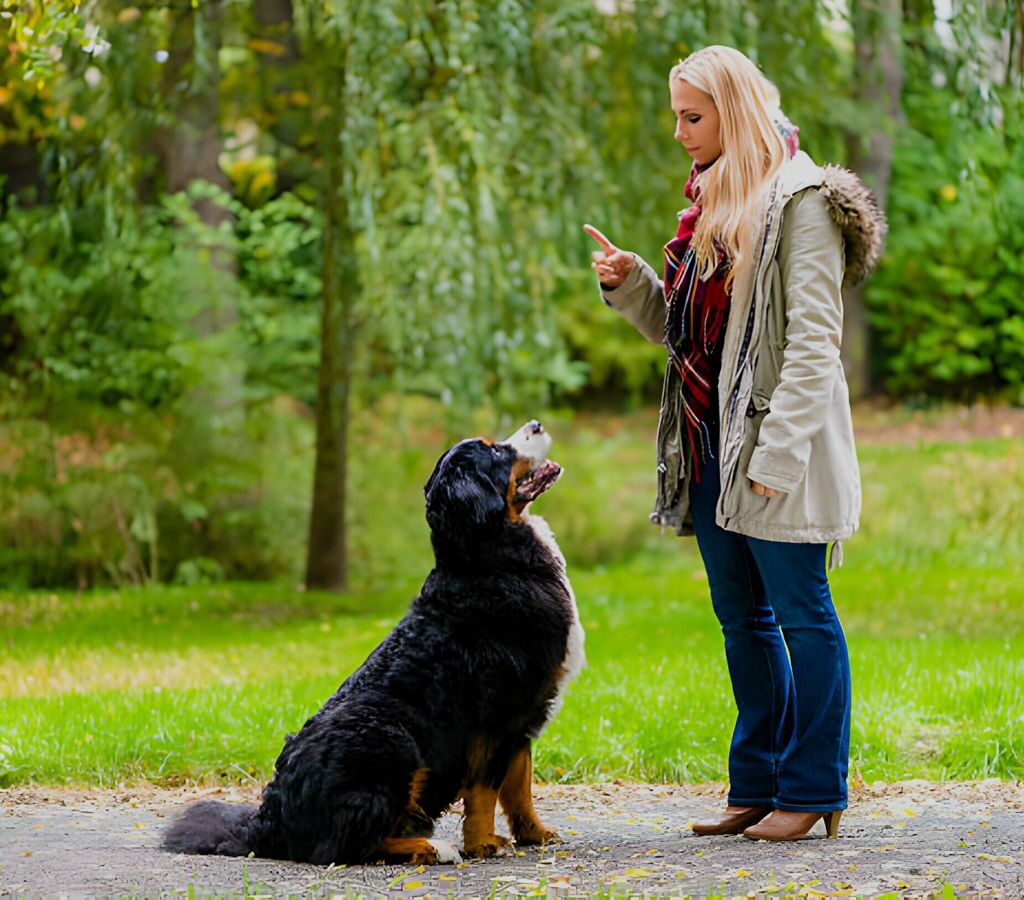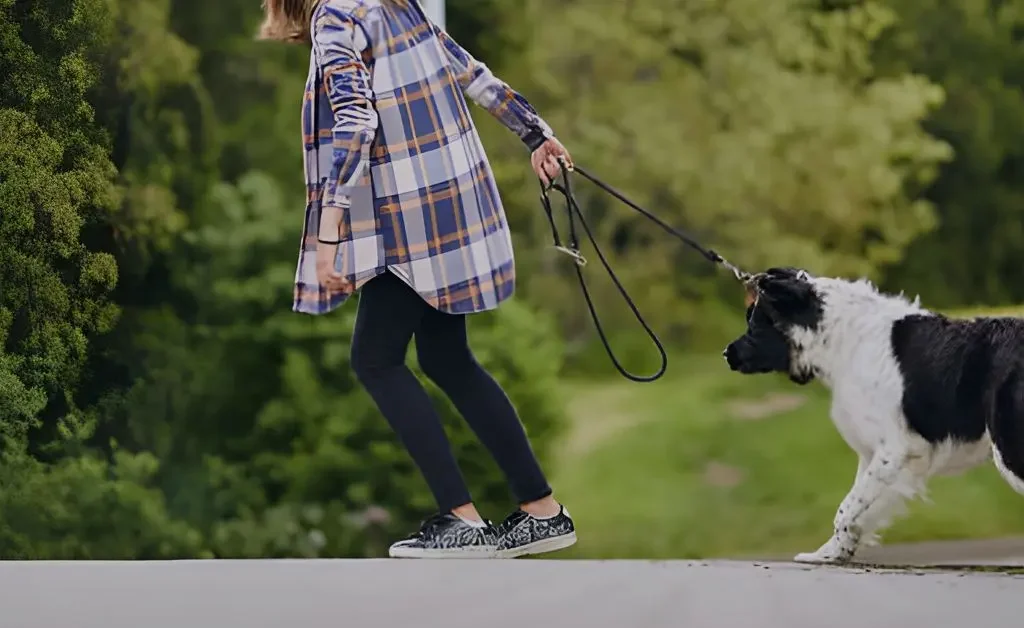Are you tired of feeling like you’re wrestling with your dog every time you go for a walk? Well, get ready to say goodbye to the struggle and hello to stress-free strolls! In this guide, we’re going to show you how to turn those challenging walks into peaceful adventures with your furry friend by mastering leash manners that stick.
Leash manners aren’t just about following rules – they’re about creating a safer and more enjoyable experience for both you and your pup. Think of it as the key to unlocking a whole new level of bonding during your daily walks. So, if you’re ready to transform those difficult walks into serene outings, keep reading because we’ve got the ultimate guide for you!
Table of Contents
Importance of Leash Manners
When it comes to taking our furry friends for a walk, having good leash manners is super important. Think of leash manners as the rules that help both you and your dog have a safe and fun time together.
Let’s dive into why these manners matter so much:
Safety First:
- Leash manners help keep both you and your dog safe during walks.
- When your dog knows how to walk nicely on a leash, it reduces the chances of accidents like pulling you into the street or chasing after other animals.
Enjoyable Walks:

- Good leash manners make walks more enjoyable for everyone involved.
- Imagine a walk where your dog isn’t pulling you all over the place or constantly tangling the leash – sounds much nicer, right?
Building a Stronger Bond:
- Teaching your dog leash manners isn’t just about following rules; it’s also about building a stronger bond between you and your furry friend.
- When you both work together to learn leash manners, it’s like you’re speaking a secret language that only you two understand. This teamwork creates a deeper connection between you and your dog.
Consistency Counts:
- Consistency is key when it comes to teaching leash manners.
- By sticking to the same rules and expectations every time you go for a walk, you help your dog understand what behavior is okay and what’s not.
- Consistent training builds trust and confidence in your dog, making it easier for them to learn and remember their leash manners.
So, remember, leash manners aren’t just about following rules – they’re about keeping everyone safe, making walks more enjoyable, and strengthening the special bond between you and your furry companion.
Setting the Foundation
Alright, let’s talk about laying down the groundwork for teaching your dog those all-important leash manners. This is where it all begins, so pay attention:
Starting in a Controlled Environment:
- It’s super important to start training your dog‘s leash manners in a place where there aren’t a lot of distractions. This could be your backyard or a quiet park – somewhere where your furry friend can focus on learning without too much excitement.
- By starting in a controlled environment, you set your dog up for success and make it easier for them to understand what you’re trying to teach them about leash manners.
Introducing Basic Commands:
- Before diving into leash manners, make sure your dog knows some basic commands like “sit,” “stay,” and “heel.” These commands lay the foundation for good leash manners and help your dog understand what you expect from them during walks.
- Practice these basic commands in your controlled environment until your dog responds reliably to each one. Once they’ve mastered these commands, they’ll be ready to tackle leash manners like a pro.
4 Effective ways to Communicate when Your Dog Ignores Commands
Positive Reinforcement is Key:
- Now, let’s talk about positive reinforcement – it’s like patting your dog on the back (or a tasty treat) whenever they do something right. Positive reinforcement helps your dog understand which behaviors are good and encourages them to repeat those behaviors in the future.
- When teaching leash manners, be sure to praise and reward your dog whenever they walk nicely on the leash or responds to your commands. This positive feedback helps reinforce their good behavior and makes learning leash manners a positive and enjoyable experience for both of you.
So, there you have it – laying down the foundation for teaching your dog leash manners is all about starting in a controlled environment, introducing basic commands, and using positive reinforcement to encourage good behavior. With these building blocks in place, you and your furry friend will be well on your way to mastering leash manners together.
Step-by-Step Training Process
Alright, let’s roll up our sleeves and dive into the nitty-gritty of teaching your dog those all-important leash manners. Don’t worry, we’ll take it one step at a time:

Breaking it Down:
First things first, we need to break down the training process into manageable steps. Trying to teach your dog everything all at once can be overwhelming for both of you. Instead, focus on one aspect of leash manners at a time, like walking nicely on a loose leash or responding to commands.
Starting with Loose-Leash Walking:
- Now that we’ve got our plan in place, it’s time to start training. We’ll begin with loose-leash walking in a distraction-free environment. This means teaching your dog to walk calmly beside you without pulling on the leash.
- Start by walking your dog in a quiet area with minimal distractions, like your backyard or a deserted street. Keep the leash loose and encourage your dog to stay by your side using gentle verbal cues and treats.
Gradually Introducing Distractions:
- Once your dog has mastered walking on a loose leash in a distraction-free environment, it’s time to up the ante. Gradually introduce distractions, such as other dogs, people, or tempting smells, during your walks.
- When faced with distractions, use positive reinforcement to encourage your dog to maintain their leash manners. Praise and reward them for staying focused on you and ignoring distractions, gradually increasing the level of difficulty as they improve.
Maintaining Patience and Consistency:
- Last but certainly not least, remember to maintain patience and consistency throughout the training process. Teaching leash manners takes time and practice, so don’t expect perfection overnight.
- Be patient with your dog and celebrate their progress, no matter how small. Consistency is key – stick to your training plan, reinforce positive behaviors, and address any setbacks with patience and encouragement.
So, there you have it – the step-by-step training process for teaching your dog leash manners. By breaking it down into manageable steps, starting with loose-leash walking, gradually introducing distractions, and maintaining patience and consistency, you’ll be well on your way to having a well-behaved walking buddy by your side.
Common Challenges
Let’s talk about some of the hurdles you might encounter while teaching your furry friend leash manners, and how to overcome them like a pro:
Identifying Common Challenges:
- Pulling, lunging, and getting distracted are some of the most common challenges you might face when teaching leash manners. It’s like your dog has a mind of their own sometimes!
- Pulling happens when your dog gets excited and tries to lead the way, while lunging occurs when they suddenly jump or lunge forward, often towards something they find interesting. And let’s not forget about distractions – squirrels, other dogs, interesting smells – you name it!
Solutions and Techniques:
- Don’t worry, though – there are plenty of solutions and techniques to help you overcome these challenges. For pulling, try using a front-clip harness or stopping in your tracks whenever your dog starts to pull. This teaches them that pulling won’t get them anywhere.
- To address lunging, practice redirecting your dog’s attention back to you using treats or a favorite toy. Teaching them to focus on you instead of whatever caught their eye can help prevent lunging behavior.
- When it comes to distractions, start by working on your dog’s focus in a controlled environment before gradually increasing the level of difficulty. Use high-value treats or toys to keep their attention on you during walks.
Stressing the Importance of Patience and Perseverance:
- Teaching leash manners isn’t always smooth sailing, and setbacks are bound to happen. But remember, patience and perseverance are key. It’s okay to take a step back and reassess your approach if something isn’t working.
- Stay consistent with your training and don’t get discouraged by setbacks. With patience and perseverance, you and your furry friend can overcome any challenge and master leash manners together.
So, there you have it – common challenges like pulling, lunging, and distractions are no match for you and your determined pup. By identifying these challenges, offering effective solutions and techniques, and approaching setbacks with patience and perseverance, you’ll be well on your way to leash manners success.
8 Best Ways to Control Dog Excessive Barking Successfully
Making Leash Manners Stick
Now that you’ve put in the time and effort to teach your furry friend leash manners, let’s make sure those good behaviors stick around for the long haul:
Reinforcing Learned Behaviors:
- It’s important to reinforce the leash manners your dog has learned outside of formal training sessions. This means practicing good behavior during everyday walks and activities.
- Keep an eye out for opportunities to reinforce leash manners in real-life situations, like when passing by other dogs or encountering distractions. Consistently rewarding your dog for exhibiting good behavior helps solidify their understanding of leash manners.
Regular Practice Sessions:
- Just like with any skill, regular practice is key to maintaining leash manners. Make sure to incorporate leash training into your daily routine, even after your dog has mastered the basics.
- Take your furry friend for regular walks where you can practice loose-leash walking and other leash manners. The more you practice, the more confident your dog will become in their leash manners abilities.
Role of Praise, Treats, and Consistency:
- Praise, treats, and consistency play crucial roles in reinforcing good behavior and making leash manners stick. When your dog exhibits desired leash manners, be sure to shower them with praise and rewards.
- Use treats as positive reinforcement during training sessions and walks to keep your dog motivated and engaged. Consistency is also key – stick to the same rules and expectations every time you go for a walk to reinforce good behavior.
Conclusion
We’ve covered a lot about teaching leash manners. First, we understood their importance for safety and enjoyment. Then, we set the foundation with basic commands. We trained step-by-step, emphasizing loose-leash walking, and addressed common challenges like pulling and distractions. Remember, patience, consistency, and positive reinforcement are key. Start implementing these techniques for successful leash manners and enjoyable walks with your furry friend!



